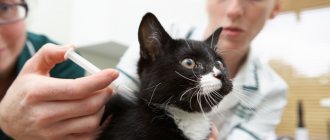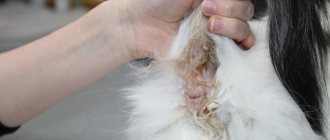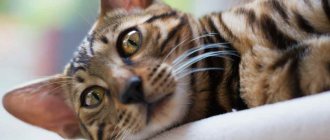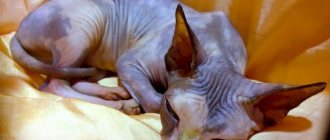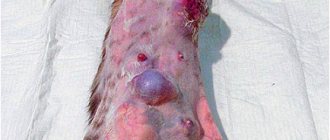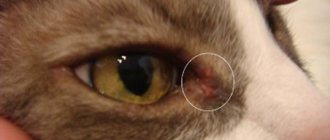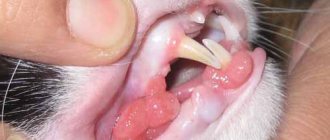Brief characteristics of the drug
- Name of pharmacological drug: Amlodipine
- Latin name of the drug: Amlodipinum
(genitive
Amlodipini
) - Chemical name of the drug: The drug is a dihydropyridine derivative. 2-[(2-amino ethoxy) methyl]-4-(2-chlorophenyl)-1,4-dihydro-6-methyl-3,5-pyridine dicarboxylic acid 3-ethyl 5-methyl ether besylate or maleate. II generation calcium antagonist
- Gross formula of active substance: C20H25ClN2O5
- Pharmacological group: Inhibitors (Blockers) of calcium channels or calcium antagonists
- Physico-chemical characteristics: white crystalline powder, moderately soluble in ethyl alcohol, slightly soluble in water
- Object of application: humans, dogs, cats
- Pharmacological effects - hypotensive, vasodilating, antianginal, antispasmodic
- Where to buy: medical pharmacies
- Release form: tablets of 5 and 10 mg
- Analogues, synonyms of amlodipine (trade name)
: Amlodac, Amlovas, Acridipine, Amlodipine-Zentiva, Amlodipine-Sandoz, Amlodigamma, Amlodipine-Chaikapharma, Amlodipine-Cardio, Amlodipine-Borimed, Amlodipine-Biocom, Amlodipine-Teva, Amlodipine-Prana, Amlodipine besilate, Amlonorm, Amlodipine besylate, Amlodipine maleate, Amlodipharm, Omelar Cardio, Amlong, Amlocard-Cardilopin, Sanovel, Amlorus, Amlotop, Vero-Amlodipine, Karmagip, Kalchek, Cordi Cor, Corvadil, Normodipin, Norvasc, Stamlo, Tenox
Pharmacological features of amlodipine
Pharmacological action - antianginal, vasodilating, hypotensive, antispasmodic.
Amlodipine
conjugates with dihydropyridine receptors of blood vessels and cardiomyocytes, inhibits calcium channels, blocks the transmembrane flow of Ca++ ions into the cell. The drug affects predominantly the smooth muscle cells of the vascular wall, with a slight effect on cardiomyocytes.
Amlodipine has a dose-dependent, prolonged, hypotensive effect.
The ability to lower blood pressure is associated with a direct relaxing effect on vascular myocytes, which reduces overall vascular resistance to blood flow.
In humans, the drug reduces the symptoms of myocardial ischemia. This effect is due to peripheral vasodilation and a decrease in total peripheral vascular resistance with a relatively stable heart rate.
Due to the weakening of the load on the myocardium of the left ventricle, its need for Oxygen decreases. Amlodipine besilate dilates large coronary arteries, both affected and not affected by atherosclerosis, which increases the transport of oxygen to the heart muscle. The active substance has virtually no effect on the sinoatrial and sinus node atrioventricular conduction.
The drug increases sodium excretion, diuresis, glomerular filtration rate, and also inhibits platelet aggregation. The pharmacological effect is formed 60–120 minutes after oral administration and lasts for 24 hours. The drug acts gradually, has a prolonged effect, and has a gradual decrease in blood pressure. Amlodipine practically does not cause reflex stimulation of the sympathetic division of the autonomic nervous system. In case of arterial hypertension, it reduces the risk and degree of formation of left ventricular hypertrophy.
In people with coronary heart disease, the drug has a cardioprotective and antiatherosclerotic effect. It has been proven that amodipine besilate does not increase the risk of sudden cardiac death or progression of heart failure in patients suffering from congestive heart failure (NYHA class III–IV) during therapy with digoxin, angiotensin-converting enzyme inhibitors and diuretics.
The drug is almost completely adsorbed in the gastrointestinal tract slowly, regardless of food intake.
The bioavailability of the drug is 60–65%, there is a “first pass” phenomenon through the liver). Maximum plasma concentrations are achieved 6–12 hours after oral administration. Amlodipine binds to plasma proteins by 97–98%. With continuous use, equilibrium plasma concentrations are achieved within a week. The volume of distribution of the active substance is 20 l/kg. Penetrates the blood-brain barrier. In the liver, the drug is biotransformed with the synthesis of inactive metabolites. The metabolism of amlodipine in the body is two-phase: the first phase is not long, and the second lasts up to 50 hours. The total clearance of the drug is 0.5 l/minute. It is excreted by the kidneys by 60% in the form of metabolites, and 10% in its native form, by the liver by 20–25% in the form of metabolites, and by the mammary gland during lactation. The half-life of the drug in renal failure does not change; in elderly patients, as well as in liver failure, it is prolonged.
Low pressure
A reduced a/d is of a secondary nature, that is, it reflects one or another physiological state in a cat. The main causes of hypotension are:
- weakness of the heart muscle;
- large blood loss;
- states of shock.
The main symptoms of hypotension are related to the general condition of the animal:
- feeling of weakness;
- thready pulse;
- fainting conditions;
- drowsiness;
- coldness of the extremities.
Low blood pressure in most cases is episodic.
Cats' blood pressure is carefully monitored before, during, and after surgery. Its sharp drop indicates a deterioration in the animal’s condition and the need to take urgent resuscitation measures.
In order to ensure that the pressure does not go beyond normal limits for as long as possible, you need to monitor the cat’s health, and especially the heart and blood vessels. A correct diet, adequate physical activity, annual preventive examinations, and compliance with the vaccination calendar will help support them.
Like humans, the average blood pressure in a cat is 120/80 mm Hg. Art. To measure the indicators, a special veterinary tonometer is used. If the value deviates from the optimal level, detailed diagnostics should be carried out and the causes of the violation should be found out. Like people, cats suffer from hypertension and hypotension.
We suggest you read: At what age can a domestic cat be castrated - why and when is it better to castrate
Method of use of amlodipine in veterinary medicine and its dosage for dogs and cats
Amlodipine for dogs and cats
prescribed orally. Dogs: 0.1-0.2 mg/kg 2 times a day or 0.2-0.4 mg/kg once a day. For cats, the drug is prescribed: at a dose of 0.625-1.25 mg/cat, once every two days (every 48 hours).
Contraindications
- Acute myocardial infarction (period of early convalescence)
- Severe arterial hypotension
- Shock
- Allergic reactions and hypersensitivity (history of allergies to other representatives of dihydropyridines)
Symptoms of horse racing
Hypertension in cats in the initial stages of development is often asymptomatic. But as the animal’s condition progresses, it becomes noticeably impaired. The cat becomes lethargic, apathetic, sleeps a lot, sometimes refuses to eat, and moves little. Other signs of high blood pressure include:
- dilated pupils;
- abundant vascular network on the cornea;
- visual impairment, retinal detachment;
- photophobia;
- disorientation in space, staggering gait;
- dyspnea;
- formation of edema on the paws;
- convulsions;
- causeless, prolonged meowing.
If the pressure rises to 180/120 mmHg. Art., the risk of developing a hypertensive crisis increases. The pet experiences a coma, increased heart rate, shortness of breath, and profuse drooling.
With reduced levels, the animal becomes excessively drowsy.
With hypotension, blood pressure drops to 90/60 or less. Sudden changes accompanied by characteristic symptoms negatively affect the general condition of the cat. When the indicators decrease, the animal exhibits the following signs:
- slow heart rate;
- drowsiness, weakness;
- fainting;
- tremor of the limbs;
- blanching of the mucous membrane.
Amlodipine is used with restrictions
- unstable angina
- heart failure
- severe aortic stenosis
- liver failure
- young age
Use during pregnancy and breastfeeding
It is considered possible to use amlodipine besilate during pregnancy. In this case, the doctor needs to determine whether the expected positive effect of treatment will exceed the hypothetical risk to the embryo.
Breastfeeding should not be carried out during drug therapy.
Side effects of the drug "Amlodipine"
According to the instructions for use of amlodipine in humans, dogs and cats, a number of side effects have been established.
From the nervous system and sense organs:
- drowsiness
- fatigue
- dizziness
- asthenia
- headache
- fatigue
- visual disturbances
- mood change
From the gastrointestinal tract:
- abdominal pain
- dyspepsia
- nausea
- diarrhea or constipation
- jaundice
From the blood (hemostasis, hematopoiesis), heart and blood vessels:
- heartbeat
- skin hyperemia
- arrhythmic syndrome (ventricular tachycardia, sinus bradycardia, atrial flutter)
- arterial hypotension
- chest pain
From the respiratory tract:
- dyspnea
From the urinary and reproductive tract:
- peripheral edema
- impotence
- pollakiuria
For the skin and outer integument:
- rash
- erythema multiforme
- itching
From the musculoskeletal tract:
- myalgia
- arthralgia
- pain in limbs
- paresthesia
Other:
- gynecomastia
- gingival hyperplasia
- increased activity of alanine and aspartic transaminases in blood serum
Interaction of amlodipine with other antihypertensive drugs
Amodipine besilate
combines well with the main groups of drugs used to treat arterial hypertension, namely: diuretics, β-blockers, angiotensin-converting enzyme inhibitors, nitrates and hypoglycemic agents.
Nonsteroidal anti-inflammatory drugs (in particular indomethacin) neutralize the ability of amlodipine to reduce arterial blood pressure due to inhibition of natriuresis and renal synthesis of prostaglandins.
Inhalational general anesthesia (in particular hydrocarbon derivatives), quinidine, amiodarone, and other calcium channel blockers may potentiate the effects of amlodipine besilate.
Overdose
Overdose symptoms:
- excessive peripheral vasodilation
- tachycardia
- long-term and pronounced decrease in blood pressure levels
Therapeutic measures:
- probing and gastric lavage
- administration of enterosorbents (for example, activated carbon)
- it is necessary to monitor the functional state of the heart and respiratory tract organs, control the volume of circulating blood and diuresis
- bringing the patient into a horizontal body position with raised lower limbs
- supportive and symptomatic treatment, intravenous infusion of crystalloid solutions, the use of dopamine, calcium gluconate, phenylephrine. The use of hemodialysis is not justified
Precautions when prescribing Amlodipine
The above drug is prescribed with caution to persons who operate complex machinery and vehicles, as well as work associated with increased concentration.
Analogs, synonyms of amlodipine (trade names)
Synonyms (analogues): Amlovas, Acridipine, Amlodac, Amlodipine-Zentiva, Amlodigamma, Amlodipine-Sandoz, Amlodipine-Cardio, Amlodipine-Borimed, Amlodipine-Biocom, Amlodipine-Teva, Amlodipine-Prana, Amlodipine besilate, Amlodipine-Chaikafarma, Amlodipine besilate , Amlodipine maleate, Amlodipharm, Amlong, Amlocard-Cardilopin, Amlonorm, Sanovel, Amlorus, Amlotop, Vero-Amlodipine, Kalchek, Corvadil, Karmagip, Cordi Cor, Normodipin, Norvasc, Stamlo, Omelar Cardio, Tenox
^Top
High blood pressure in cats
The fact is that cats have a predisposition to chronic high blood pressure, especially cats whose age has already crossed the border of youth. Most often these are cats over 14 years old, but, alas, it occurs in younger ones. It is very important to identify high blood pressure in a cat as quickly as possible. In this case, the prescription of special drugs will have the best effect and will not allow many complications to develop, including the development of renal and/or heart failure. Cats even have a “special” disease, like humans – systemic arterial hypertension, which has extremely serious consequences.
The difficulty lies in the fact that when owners notice a deterioration in the cat’s well-being, based on such signs as:
- weight loss
- blindness
- development of increased thirst and increased fluid intake
- movement disorders, etc.,
the process has already gone far, so we recommend that cats over 6 years of age undergo tonometry at least once a year.
At the moment, the process of measuring blood pressure in cats is easy and painless (unlike, say, 10 years ago). In our VETMASTER center there is a special device that can be used to measure an animal’s blood pressure - PatMap.
We invite you to familiarize yourself with what treats you can please your domestic cat
This is a small, virtually silent device that allows you to accurately measure a cat’s blood pressure without exposing it to unnecessary stress, which, unfortunately, cannot be done with human tonometers.
The accuracy of the measurement is an extremely important factor, because the increase in blood pressure in a cat exceeds 190 mmHg. in systole and above 120 mmHg. in diastole clearly indicates pathology. The cat’s systole pressure between 160-190 indicates that you and I need to strengthen control over the cat’s condition, and perhaps conduct additional examinations.
If your kitty is prone to stress, when visiting veterinary clinics, before tonometry, you and her will be taken to a separate quiet room, where you will spend some time together so that the cat calms down, gets used to the smells and understands that she is not in danger. After this, it will be possible to measure the animal’s blood pressure.
If there is a lack of treatment and proper complex, increased ICP (intracranial pressure) can lead to serious complications. There may be a decline in vision up to its loss, disruption of blood circulation in the brain, and problems with the nervous system. With a sharp increase in advanced cases, even death is possible.
For increased intracranial pressure, the symptoms are quite typical and it is important to pay attention to them in a timely manner. Especially because this pressure acts as an indicator of other ailments with even more serious consequences.
Having discovered the first signs of the disease, you need to visit a doctor as soon as possible to undergo an MRI or other suitable examination methods. This will allow you to make an accurate diagnosis and prescribe a complex of treatment. It is never permissible to ignore signals from the body that indicate that there is some kind of destructive process in the body. Even a headache will not arise out of nowhere.
According to the physiological explanation, intracranial pressure occurs due to cerebrospinal fluid (CSF). It accumulates in increased quantities or, conversely, in deficiency in a certain part of the skull. This happens due to problems with its circulation process. The function of the cerebrospinal fluid is to protect the gray matter from overload, as well as mechanical damage.
The substance is under constant pressure, goes through a renewal process and circulates through different areas. It usually takes a week for the fluid to renew, but for various reasons it can accumulate and for this reason signs of increased intracranial pressure will appear.
Accordingly, ICP is a quantitative characteristic that reflects the degree to which cerebrospinal fluid affects brain tissue. This indicator in a normal situation is from 100 to 151 mm. water Art.
Very often the cause of this situation is a head injury, but there can be many other negative factors, including various diseases. The most common conditions when the problem appears:
- An inflammatory process occurs, as a result of which the brain increases in volume;
- Foreign body in the skull, like a tumor, etc.;
- Excess fluid due to hydrocephalus;
- Problems with metabolic processes, as a result of which the liquid begins to be poorly absorbed;
- Spasms in the vessels through which cerebrospinal fluid circulates;
- Poisoning and intoxication leading to an increase in the amount of blood in dilated vessels;
- Excess weight (women suffering from weight problems very often have benign high blood pressure and, several months after the initial onset of symptoms, the disease in some cases resolves completely spontaneously);
- Migraine;
- Stroke and much more.
The clinical picture of increased intracranial pressure and symptoms in adults are somewhat different than in children. In most situations, symptoms develop gradually. The main signs of painful processes of this nature:
- Morning headaches - characterized by a pressing nature in the temples, frontal and occipital parts;
- Vomiting and feeling of nausea;
- Dizziness;
- Feeling overwhelmed and apathy;
- Drowsiness;
- Problems with memory, attention and logical thinking;
- Rare pulse;
- Deviations of blood pressure from the norm upward or downward;
- Sweating;
- Decreased vision.
Headaches usually come to the fore in terms of symptoms, they have a pressing and bursting sensation, and sometimes an unpleasant pulsating feeling appears. The provoking factor due to which pain usually occurs in the morning is a horizontal position of the body, coughing or sneezing, straining, or hyperextension of the head. May be accompanied by nausea, noise in the head, vomiting.
Visual disturbances occur in cases of increased ICP due to swelling in the optic nerve papilla and can lead to blindness. Visual symptoms may include objects appearing in duplicate.
First, peripheral vision deteriorates, and then central vision. In addition, high intracranial pressure can cause symptoms in the form of swelling of the eyelids and face, bruises under the eyes, tinnitus and hearing loss, pain in the upper part of the cervical vertebra, as well as the spinal cord.
In addition to these syndromes, autonomic dysfunction may be added, accompanied by the following factors:
- Increased salivation (hypersalivation);
- Jumps in blood pressure and pulse throughout the day;
- Moisture of the palms and other areas of the skin;
- Attacks of suffocation;
- Anxiety, a feeling of unreasonable fear, drowsiness;
- Pain in the heart or stomach.
In severe cases, due to increased ICP, stroke-like conditions occur that seriously threaten the patient’s life. Such conditions will occur with impaired consciousness up to falling into a coma, unsteadiness when walking and severe dizziness, loss of strength in the limbs, speech disorders, and severe incessant vomiting.
Hypertension can be primary or secondary. It is considered primary when, apart from a persistent increase in blood pressure, there are no more accompanying symptoms (idiopathic or unexplained). Secondary hypertension is an increase in blood pressure due to any other disease. The most classic option.
- With persistent average values up to 150/95-110, the cat is monitored; in the absence of symptoms, treatment is not yet prescribed.
- Indicators above 160/120 are a direct indication for appropriate therapy to avoid disruption of the functioning of individual organs and systems.
- A level above 180/120 is a reason to start immediate antihypertensive treatment.


